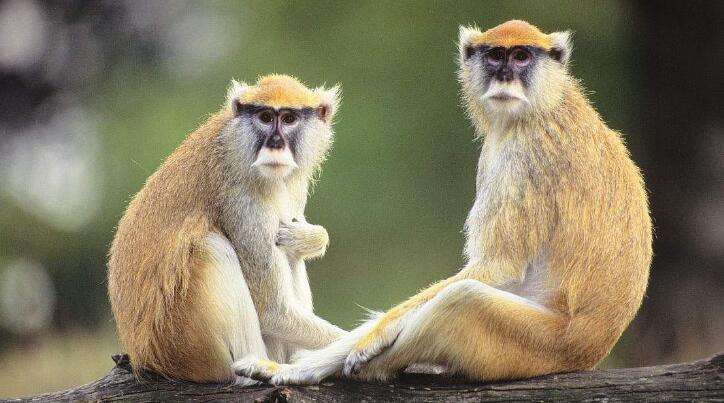Erythrocebus patas
IUCN
LCBasic Information
Scientific classification
- name:Erythrocebus patas
- Scientific Name:Red monkey, African golden monkey
- Outline:Primates
- Family:Eutheria Primates Simplorhinidae Cecidia Macacinae Erythrocebus
Vital signs
- length:50-70 cm
- Weight:7-13kg
- lifetime:About 24 years
Feature
The fastest monkey in the world.
Distribution and Habitat
The red monkey lives only in Africa. The species is widely distributed throughout the Sahara Desert from the western tip of Senegal to East Africa. Red monkeys are also found in southern Cameroon. They mainly inhabit tropical savannas and woodlands. They are typical species living in savannas, dry and dense woodlands and grasses. They can tolerate drought conditions. Some of them are found close to the southern edge of the Sahara Desert. However, there are exceptions. Some live in humid woodlands. Deforestation has led to the discovery of these monkeys living in the forest. They appear in the area of the flooded Senegal River Delta.
Appearance
The male red monkey weighs about 7-13 kg, and the female weighs between 5-7 kg. Body length 50-70 cm, tail length 75 cm. The upper body fur is orange-red, like a furry coat; the chest, abdomen, legs and feet are gray-white. The black cheeks are hairless, but there is a thick white beard around the cheeks and chin. The body is thin and narrow, with long legs for easy movement and prominent ribs. Binocular vision is directed forward. The incisors are spoon-shaped, the canines are prominent, and the molars are double-ridged. The gear format is 2/2, 1/1, 2/2, 3/3 = 32. The nostrils are narrow, close together, and pointed downward (stenophithecus).
Sexual dimorphism. The mid-facial area of the skull is enlarged in females compared to males. Males tend to be longer and larger in overall size than females.
There are four subspecies. The western subspecies has a black nose, and the eastern subspecies has a white nose.
Red monkeys mainly feed on insects, gums, seeds and plant roots a
Details
One thing that makes red monkeys different from other monkeys is that they generally live on the ground, and most of them are distributed in the desert. The harsh climate in the desert makes it difficult for other creatures to survive, so there are very few trees. Over time, the red monkeys' climbing skills have degenerated (and they are not good at climbing). However, without the protection of the big trees, red monkeys are more vulnerable to attacks on land. In order to survive, they have to adapt to the environment and gradually evolve. They have strong limbs and can run faster, so they are called "the fastest monkey in the world."

Red monkeys have a hierarchy within their groups, with the female leader determining the group's activities. Male red monkeys are primarily responsible for guarding. Red monkeys may avoid each other, or they may behave aggressively. This seems counterintuitive because their home range is large. The large group range also makes defense quite difficult. The all-day home range or home range of this species totals 3200 hectares. When conflicts occur between groups, females and young monkeys are more active than males. Males only make loud warning calls. However, during the mating season, males and females fight together against other groups. Females tend to defend resources in their home range against females in other groups. In terms of intra-group relations, dominance hierarchies are not obvious in red monkey groups. Females and adolescents interact with each other socially, and allomaternal care is very extensive. Males and females rarely interact except during the breeding season. Red monkeys are diurnal.
Red monkeys live in social groups where only females are permanent members. When males leave their natal group at sexual maturity, they may join all-male groups, or males may lead a solitary life. Usually only one male appears in each group. Groups can consist of 10 to 40 members. In terms of inter-group relations, conspecifics are not friendly. One very special thing about red monkeys is their mating method. They mate not only between opposite sexes, but also between the same sex. After red monkeys reach sexual maturity, they may be attracted to the same sex and then use special methods to mate with the same sex. Red monkeys also have a strong sense of territory. They will protect their own territory. Some male red monkeys may enter other tribes to find partners after sexual maturity, but they are usually discovered and expelled.
Female red monkeys often use grooming to "buy" the right to approach their cubs. Newborn cubs are very attractive to other monkeys, especially females who are very eager to take care of and caress the cubs. Mothers are very reluctant to be separated from their fragile children. At this time, female red monkeys will groom the mothers of the cubs, and after grooming, they can touch the cubs.
Red monkeys are hunted for food, their meat is sold in the pet market, and sometimes they are used as experimental subjects in medical research. Because they often raid crops, steal millet, bananas, peanuts and wheat, in some areas such as Sudan, they will enter plantations to steal pineapples and eat cotton flowers. These will become reasons for people to hunt.
The main reason for the survival crisis of this species is the development of habitats by humans, the expansion of farmland and plantations, such as deforestation and drought in Senegal and East Africa.








